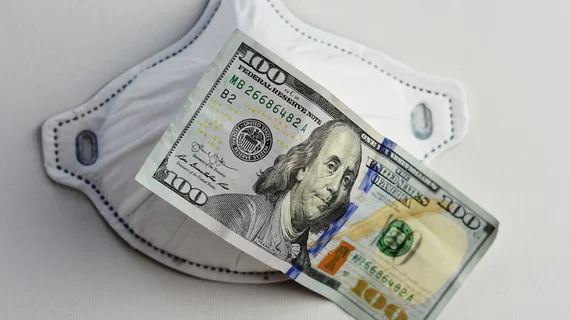Radiology departments around the world have experienced dramatic drops in imaging volume resulting in deep financial losses, but doctors from the University of Washington in Seattle say, with the proper planning, they can emerge from the pandemic even stronger.
UW Radiology polling estimates that many patients don’t plan to return to hospitals until months after stay-at-home orders are lifted, and the financial fallout may be long-lasting.
In fact, Mahmud Mossa-Basha MD, with the university, and colleagues pegged net revenue losses across its three hospital systems at $4.9 million through March 2021. Already, they say, UW Radiology gross charges have dropped 30% in April compared to the months prior, with the lion’s share of that stemming from decreases in outpatient imaging.
These facts raise concerns for an “extended radiology financial downturn,” they added, and necessitate short-term mitigation planning and long-term measures to bolster the “financial resilience” of rad departments, the group wrote in an opinion piece published May 27 in the Journal of the American College of Radiology.
Short-term planning
UW Radiology has undertaken a number of cost-cutting steps to maintain faculty and staff salaries, and avoid furloughing, including eliminating overnight teleradiology coverage at one of its community hospitals, an estimated $45,000 in savings.
Additionally, support staff is being consolidated and optimized for $400,000 in relief. A six-month hiring freeze has gone into effect, but signed contracts will be honored. Seventy-five percent of the incentives, however, will be deferred until the next academic year, pushing out $300,000 in payments.
These measures and more will help UW Radiology weather the COVID-19 crisis, Mossa-Basha wrote.
“We estimate that these cost-cutting approaches in addition to a few others will result in department spending reduction/saving of $3,257,000,” the authors estimated.
While imaging departments undoubtedly need to enact such measures in the near-term, Mossa-Basha urged radiologists to maintain, and even strengthen, safety measures as hospitals begin to resume elective imaging.
Long-term outlook
Patient anxieties are likely to abound until there is a dependable vaccine, the authors noted, and radiology experts must focus on strengthening their “financial base and increasing reserves to achieve improved resiliency,” the team wrote.
For UW Radiology, that means increasing revenue diversification streams. Mossa-Basha and others have been in talks with hospital leadership to create four new outpatient imaging centers that would operate under a shared revenue model between the radiology department and hospital.
And the funding is in place to create an overnight faculty emergency radiology service to cover the system’s three emergency departments. Leadership is also looking to expand this reach to offer overnight teleradiology coverage to state community hospitals.
Private practices are likely to take different long-term approaches than academic institutions, and may consider limiting or potentially eliminating high-cost, low-volume services, and partnering with other practices to cover these services.
“While a slow ramp-up in the short-term may reduce financial growth potential, these programs will support long-term fiscal health and help build towards a more stable future,” the authors concluded.

